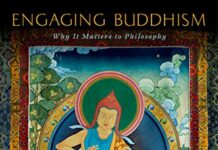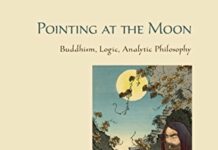
Ebook Info
- Published: 2001
- Number of pages: 320 pages
- Format: PDF
- File Size: 4.77 MB
- Authors: Jay L. Garfield
Description
This volume collects Jay Garfield’s essays on Madhyamaka, Yog-ac-ara, Buddhist ethics and cross-cultural hermeneutics. The first part addresses Madhyamaka, supplementing Garfield’s translation of Fundamental Wisdom of the Middle Way (OUP, 1995), a foundational philosophical text by the Buddhist saint Nagarjuna. Garfield then considers the work of philosophical rivals, and sheds important light on the relation of Nagarjuna’s views to other Buddhist and non-Buddhist philosophical positions.
User’s Reviews
Editorial Reviews: Review “It represents useful constructive philosophical engagement with Buddhist texts and offers much-needed theoretical and practical reflection on the project of cross-cultural philosophy itself.”– The Journal of Religion”Empty Words represents a serious engagement with Buddhist philosophy and contributes to the exegesis of Madhyamaka and Yogacara thought. More importantly, however, I think that it contributes to the further development of Buddhist philosophy as a continuing project”-Mario D’Amato, Hampshire College, Philosophy East & West About the Author Jay L. Garfield is at University of Massachusetts.
Reviews from Amazon users which were colected at the time this book was published on the website:
⭐Nice set of essays.
⭐Despite the praise heaped on this book in other reviews, a degree of caution seems advisable.It is by no means certain that the ‘Scepticism’ of Sextus Empiricus functions akin to the Madhyamika and it takes some faulty analyses to come up with the sort of correspondences Jay Garfield likes to find. To be concise, unlike Nagarjuna, Sextus Empiricus wouldn’t accord any relevance to smvrtti-satya. Nagarjuna made the distinction between samvrtti/paramartha-satya to save the value accorded to relative knowledge. True, there are points where Nagarjuna even appears to be questioning the relative (i.e. purely empirical) claims of samvrtti, the validity of causality etc. – detrimental to his spiritual purpose. This left the way open for criticism and the developed Vijnanavada system came about to account for the things left unaccounted for in the Madhyamika. It may well be that in the ultimate sense, no modification of consciousness transpires. Nevertheless, this is most certainly the case in the relative sense. Hence, it seems rather pointless trying to explain away the Vijnanavada as a kind of eccentricity, let alone one confined to adherents of the Gelug-pa, as one reviewer would have it. In truth, there has never been a ‘pure’ Madhyamika school as Jay Garfield writes about it. In Tibetan Buddhism, as in Northern Buddhism generally (e.g. in India, China, Korea,Japan etc.), it will be found that the Madhyamika and Vijnanavada have exerted equal influence and are often found side-by-side. So far as the interface between Western philosophy and Buddhism goes, it strikes me that Jay Garfield has overlooked the real parallels – viz. Heraclitean flux versus the ‘One’ of Parmenides, equvalent to the tension between the ‘flux’ philosophy of the Sarvastivadins and the adherents of theold Atmavada. The resolution of this in the Western tradition is to be found in Plato (cf. the Theatatus and Sophist) – rather than Sextus Empiricus.
⭐Garfield’s Empty Words is an insightful and helful commentary to the Mulamadhyamakakarika, which he also has a translation of in print. I was particularly impressed with his skillful application of Nagarjuna’s theory of causation concerning the cultivation of the bodhicitta and the requisite belief in the rebirth as established in the Geluk School. His rejection of such a notion is explicated in clear terms that shows how their tradition runs contrary to the philosophy of Madhymaka.
⭐This book is a tough read! Before reading it, I would suggest that you read The Fundamental Wisdom of the Middle Way: Nagarjuna’s Mulamadhyamakakarika by Nagarjuna, and Jay L Garfield. ‘Empty Words’ builds on the informtion given in the previous book, then it expands your horizons, leaving you wondering what to think next. It was enlightening to read the essays on the beliefs of the yogacara school (which seems to be the idealist school in most direct conflict with Nagarjuna’s realism).The essay in which Garfield states that Nagarjuna’s theories and ‘Satyagraha’ are complementary left me stunned for a fornight. Everything seemed to be turned upside-down. Then I got it!.If you are looking for a philosophical understanding of Buddhism (and you have read the antecedent book) this may well be for you
Keywords
Free Download Empty Words: Buddhist Philosophy and Cross-Cultural Interpretation 1st Edition in PDF format
Empty Words: Buddhist Philosophy and Cross-Cultural Interpretation 1st Edition PDF Free Download
Download Empty Words: Buddhist Philosophy and Cross-Cultural Interpretation 1st Edition 2001 PDF Free
Empty Words: Buddhist Philosophy and Cross-Cultural Interpretation 1st Edition 2001 PDF Free Download
Download Empty Words: Buddhist Philosophy and Cross-Cultural Interpretation 1st Edition PDF
Free Download Ebook Empty Words: Buddhist Philosophy and Cross-Cultural Interpretation 1st Edition




